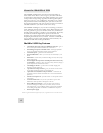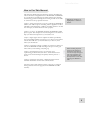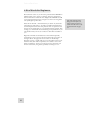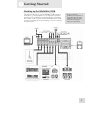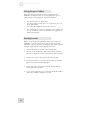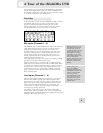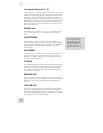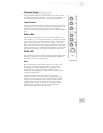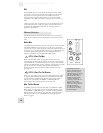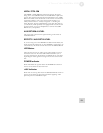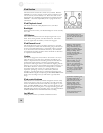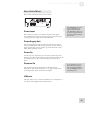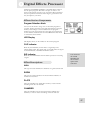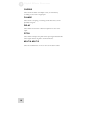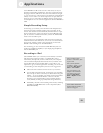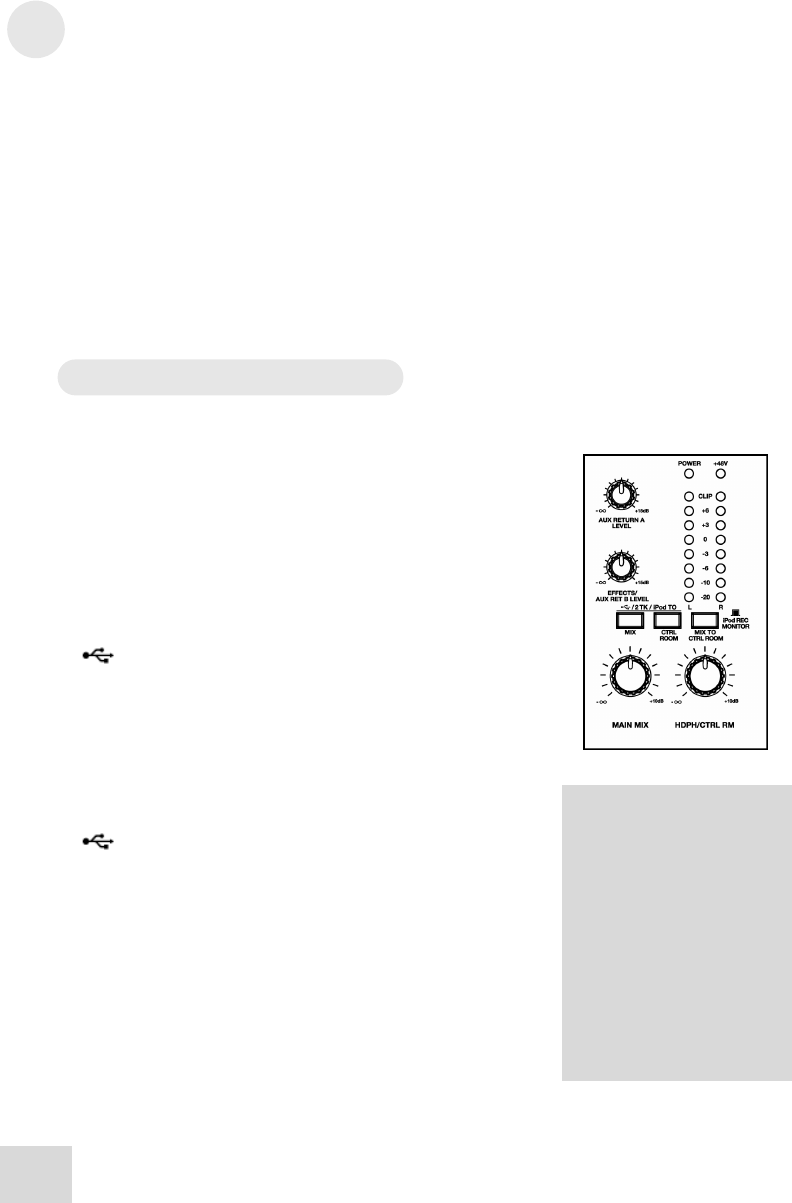
2
A Tour of the iMultiMix USB
12
EQ
The iMultiMix gives you three bands of EQ per channel. Using
these knobs, you can tailor the channel’s signal by boosting some
frequencies and cutting others. The LO and HI controls are
shelving controls with fixed frequencies of 75 Hz and 12 kHz
respectively. The MID control has a peaking response fixed at 2.5
kHz.
“Shelving” means that the mixer boosts or cuts all frequencies past
the specified frequency. “Peaking” means that frequencies above
and below the specified frequency fall off, forming a peak in a
graphical representation.
Master Section
The Master Section is the heart of the mixer, where the channel
inputs and aux returns all are mixed together and routed in various
ways.
Main Mix
The signals from all channels and aux sends are sent to the main mix.
The MAIN MIX level control is the one you’ll use to control the
overall level of those combined signals. This knob affects the levels of
the signals sent to the MAIN MIX OUT and the 2-TRACK OUT. In
its leftmost position the signal is cut off completely, and in the
rightmost position you get an additional 10dB of gain.
/ 2TK / iPod To Mix
When you press this switch, the signals coming in from your
computer through the USB connection, an external source through
the 2-TRACK IN, or an iPod attached to the dock get blended and
routed to the MAIN MIX, joining whichever other signals are already
part of the main mix. Used this way, this channel effectively
becomes another stereo channel (but without all the extras like
pan, EQ, etc.).
/ 2TK / iPod To Ctrl Room
When you engage this switch, the signals coming in from the USB
connection, the 2-TRACK IN jacks, or a docked iPod are blended
and routed to the headphones and to the control room output.
This level is controlled by the HDPH / CTRL ROOM level
control and cancels out any signal from the main mix.
Mix To Ctrl Room
In DOWN position, routes the Main Mix to the HDPH / CTRL
RM outputs. In UP position, routes the iPod Rec Monitor signal
to the HDPH / CTRL RM outputs. Generally speaking, the iPod
Rec Monitor bus is the same as your Main Mix, except that it also
includes the Limiter, if the LIMITER switch beneath the iPod
dock is engaged.
The iMultiMix features a
Limiter, which prevents the
audio signal from clipping
and distorting before entering
your iPod. Sometimes it’s
possible that the Limiter is
working too hard and may
result in an unpleasant
“pumping” sound while it is
engaged. The iPod Rec
Monitor is useful when you
want to hear exactly how the
mix will sound before
recording to your iPod, in
case the Limiter is causing
unwanted artifacts.



